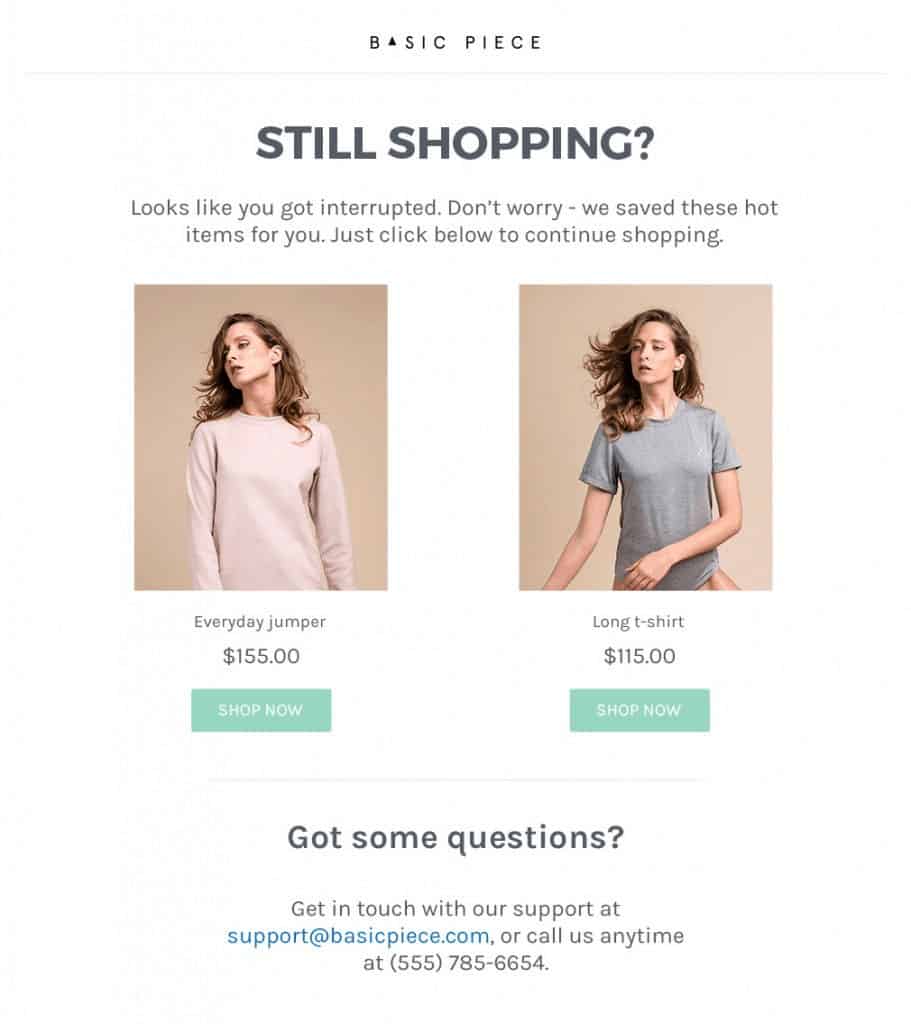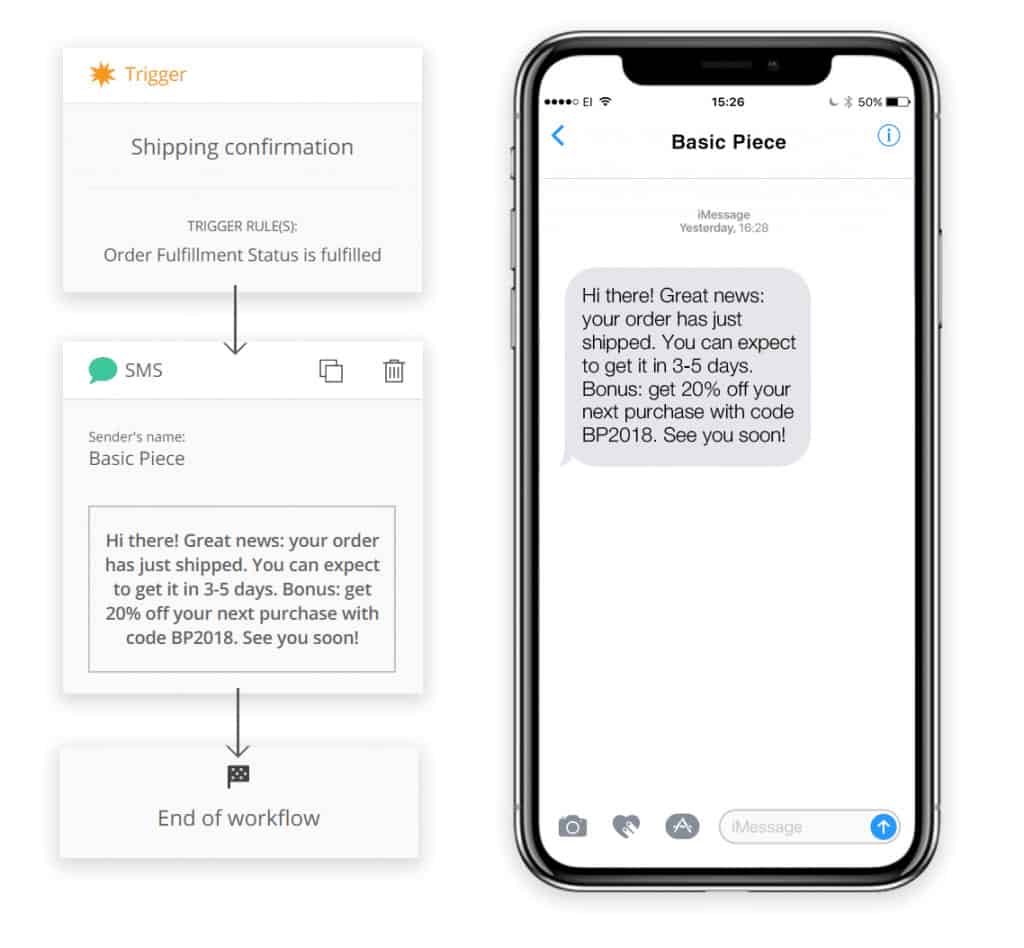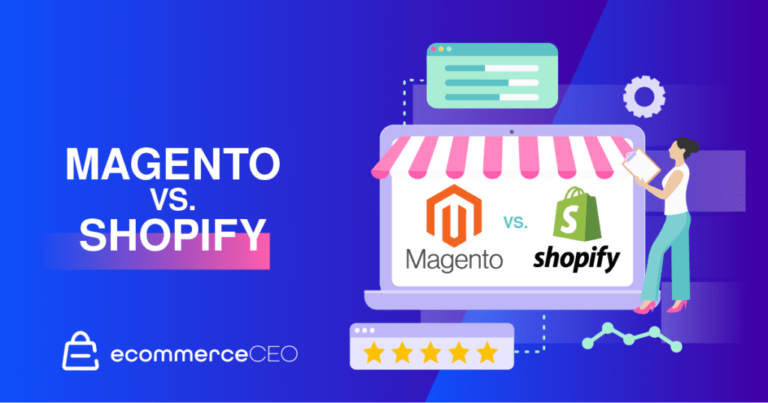An omnichannel approach goes beyond using a variety of platforms to communicate with your target audience. Unlike multichannel marketing, omnichannel marketing requires each platform to play a unique role in your overall strategy. Your strategy, then, requires that all platforms work together to provide the most personalized experience to each and every customer.
To manage a successful omnichannel marketing campaign, you need to make sure that each channel performs a unique function. If a channel is redundant, you don’t need it. Apart from that, you need to plan out exactly what channels and communication styles will perform best for each of the five stages in the typical customer journey: The visitor, the subscriber, the shopper, the customer, and the repeat customer.

Omnichannel Marketing Customer Journey #1: The Visitor
The visitor is someone with no prior relationship with your brand or website. It may be the first time that they’re encountering you or they may have also known about you before and have visited your website several times but have never subscribed to a service or made a purchase. Indeed, there are times when first-time visitors make a purchase, however, that rarely happens and it’s unrealistic for you to make that your goal.
In fact, 6-7 touchpoints across multiple channels are what it typically takes for a person to go from a first-time visitor to an actual paying customer. At this stage, the realistic goal would be to convince them to subscribe and the best way to do that is through a sign-up form.
Sign-Up Forms: Website

Some of the best omnichannel marketing tools allow you to easily create customized sign-up forms for your website. Landing pages are known to be the most effective, maintaining an average subscription rate of 23%. Wheel of Fortune and other gamified forms also offer impressive subscription rates, averaging about 10%. Although managing average subscription rates of less than 5%, regular popups and signup boxes may still offer good value depending on the context as well as the content.
The trick to making sign-up forms work as part of your omnichannel marketing is targeting the right type of form and using the right messaging for the right visitor — that means you should have different forms in different parts of your website. Someone looking at a product might subscribe using a form that offered a chance to win a discount voucher where someone reading through your shipping policies might subscribe using a popup that offered free shipping. Always design your forms to offer what’s most relevant to the context of the visitor.
Retargeting Ads: Google
If a visitor doesn’t subscribe despite being served the most relevant forms with the best incentives you can offer, don’t fret. Use Google retargeting ads to remind them of your presence. They might come back and subscribe next time.
Omnichannel Marketing Customer Journey #2: The Subscriber
Once you’ve gotten a visitor to subscribe, there are countless things you can do to help them along the path to actually making a purchase. Among the first and most crucial assets you can have at this stage is an automated welcome series.
Welcome Series: Email & SMS
Receiving a welcome email is a standard part of the subscription process. Most subscribers expect it and that’s why this type of email boasts an impressive average open rate of 42.2%. But, if your subscriber has opted into SMS communication as well, you have a unique opportunity to use both channels to welcome them.
For example, if the majority of your shoppers are on mobile, you could set an automated SMS to send a short welcome message and a voucher code. Then, send out an automated email for a more elaborate welcome where you can let them know more about your brand and what to expect from you.
Retargeting Ads: Google & Facebook
For subscribers that don’t make a purchase after your automated welcome series via SMS & email, you could wait and see if your future messages will work out or you could use Facebook and Google retargeting ads to keep your brand at the top of their minds and encourage them to come back to make a purchase.
Omnichannel Marketing Customer Journey #3: The Shopper
If a subscriber visits your website after every touchpoint, you know you’re doing things right. But, don’t expect them to make a purchase right away.
Some of them will and that’s great! For those that don’t, there’s still plenty you can do. The good news is, the more interactions they have with you, the more data you have on them. You can use that data to keep personalizing your messages and entice them to make a purchase.
Browse Abandonment: Email & SMS

At this stage, email is your best option because you don’t want to be obtrusive. Trigger an email message to send a couple of hours after a customer leaves your website. Thank them for visiting and send them product recommendations based on what they were viewing. Don’t freak them out by sending them exactly everything they viewed, besides, they didn’t purchase those products for a reason. Instead, use that information to zone in on their general interests and send recommendations based on that.
You can also consider sending them discount vouchers via SMS, just in case it was the price that held them back.
Cart Abandonment: SMS, Instant Messenger, or Push Notifications
It sucks when a shopper abandons their cart but that also gives you a compelling way to contact them. With an omnichannel approach, you’re no longer limited to email. You can use quick and unexpected channels that might prompt your shopper to come back to complete their purchase.
On SMS, you can send a simple reminder that prompts them to take action immediately. For example, “Looks like you got interrupted. Don’t forget that the sale ends today so make sure you checkout before midnight!”
On instant messengers like Facebook Messenger, WhatsApp, and Viber, you can engage your shoppers in a conversation and offer them support if they need it. For example, “We noticed that you left some items in your cart. Did you have any concerns? Let us know. We’re here to help!”
Like SMS, you can use push notifications to remind visitors of their earlier intent to purchase and prompt them to act on it immediately. The good thing about push notifications is that they can be back on their shopping cart page with just a tap. Make sure you take advantage of that. For example, “Prices have dropped for some of the items in your cart. Tap here to check out while stocks last.”
Remember to choose the one that’s best for you. Don’t use all three or you might overwhelm your shopper. Also, give them at least a couple of hours before you contact them after they leave your website.
Cart Abandonment Follow Up: Email

Send an email about 12 hours after your instant messages. This will serve as another reminder that’s more comprehensive with images and details of the items they abandoned.
Retargeting Ads: Google & Facebook
If the shopper still doesn’t return, there’s always Google & Facebook for retargeting ads. That gives them a higher chance of returning and eventually making a purchase.
Omnichannel Marketing Customer Journey #4: The Customer
Once a shopper has actually made a purchase, you did it! Your efforts have finally paid off! But, don’t think for a moment that your job is over. At this stage, the most important thing to communicate is that you appreciate their purchase and that you care about giving them a great experience. Be present at every stage of the fulfillment process, even if it’s only through automated messages.
Instant Order Confirmation & Shipping Updates: SMS, Instant Messenger, Push Notifications, etc.

Let your customers choose how they’d like to be updated about the fulfillment process. This can be done at checkout. Give them a variety of choices and make sure you stick with it. Use the same channel to send the order confirmation and updates until they actually receive the item. No matter the channel, make it easy to go back to their account to get more details about their orders.
Detailed Order Confirmation: Email
Whether or not they choose a short-form communication channel, send a more formal email containing a short message of thanks, the details of their order, a cost breakdown, and some contact information in case they have any concerns.
Omnichannel Marketing Customer Journey #5: The Repeat Customer
Once you’ve fulfilled the first purchase of a customer, don’t stop there! Generally, businesses make 40% of their revenues from repeat customers so it’s really worth making the effort at this stage. Here are a few ways to keep your customers engaged:
Order Feedback: Instant Messenger
Once they’ve had ample time to enjoy the products they purchased, you can use an instant messenger like Facebook Messenger, WhatsApp, or Viber to ask for feedback. Here’s an example: “Are you enjoying your purchase? Let us know if you have any concerns.”
That simple message will not only bring in casual yet honest feedback but it will also go a long way in showing how much you care about pleasing your customers.
Social Media Following: Facebook Messenger
If you’re looking to grow your Facebook or Instagram following or you’re looking for more user-generated content, use Facebook Messenger to engage your customers. You can simply ask for feedback or you could give them an incentive to share images of their purchases.
Cross-Selling: Email
Email is the best option for cross-selling because it’s the least obtrusive. To cross-sell on email, send customers recommendations of products that might complement their previous purchases. If you have a rewards program, remind them of their accumulated points and how they can use it to make a purchase.
Reactivation: Email or SMS
Use email or SMS to reconnect with customers that haven’t been back to visit your website in a long time. Sometimes, a simple reminder that you exist can go a long way.
Here’s a great example showcasing items similar to a customer’s previous purchases: “We miss you! These items reminded us of you so we thought we’d say hello. Hope you come visit us soon!”
Conclusion
Launching a successful omnichannel marketing strategy requires you to determine which channels to use at each step of the customer journey. You also need to know how to use the context of each step to communicate your messages in the most convincing manner. By understanding this crucial concept of omnichannel marketing, you have the capacity to provide the most compelling customer experience that will definitely help elevate your brand to the next level.






